The City of New Orleans has been called the “Big Easy” among other nicknames. Recently, Marcin Pikus, Conservator of Stone Sculpture and Architectural Features of McKay Lodge Conservation Laboratory, performed sculpture restoration in New Orleans. The sculptures were big, but arguably the conservation treatment undertaken at the F. Edward Herbert Federal Building was not all “big easy.”
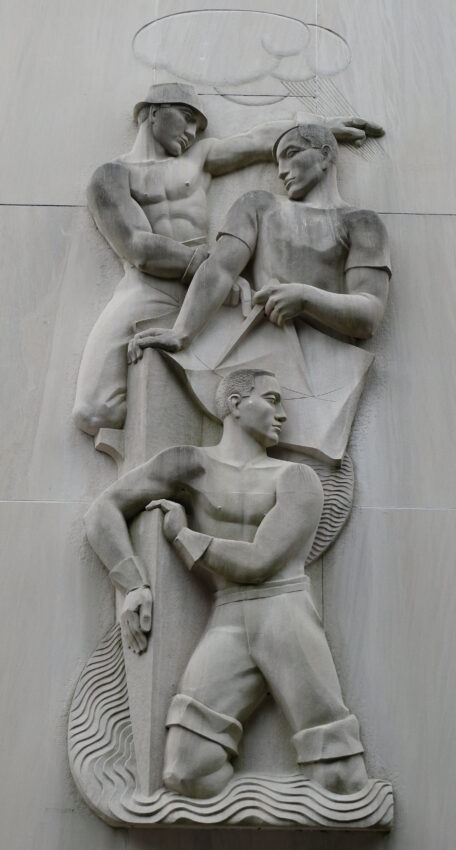
The building facade was to be cleaned as part of a construction project, and three artworks: Karl Lang, Flood Control, 1942, Armin Scheler, Harvesting Sugar Cane, 1942, and Gifford McGregor Proctor, Four Eagles, 1942.
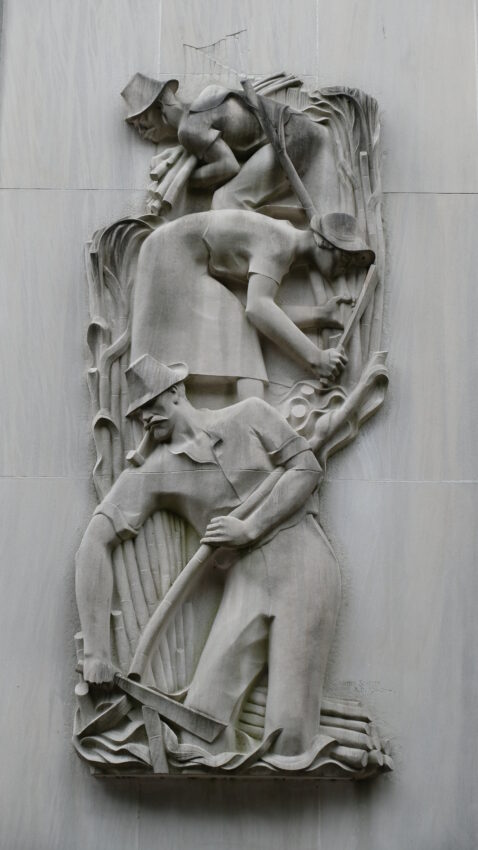
Flood Control and Harvesting Sugar Cane are delicately carved limestone reliefs incorporated into the facade of the building. In Flood Control, three muscular men attempt to halt flood waters as a storm cloud carved on the wall above them hinders their efforts. Harvesting Sugar Cane illustrates two men with mustaches and a woman hunched over and busily cutting and gathering sugar cane. Four Eagles features streamlined carvings of bald eagles made from highly polished pink and black granite.
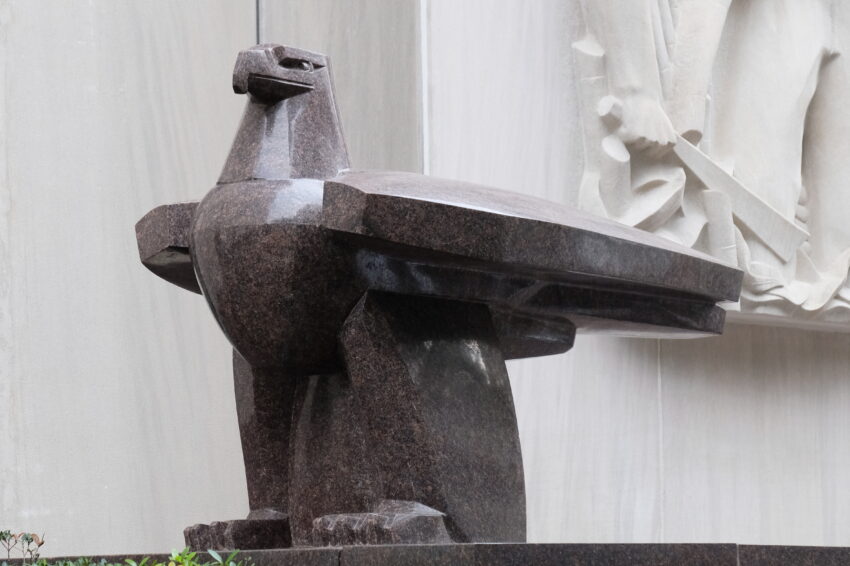
Conservator Pikus made two trips to perform the sculpture restoration in New Orleans. There was a concern that cleaning residues from the main building cleaning might have impacted the artworks. Conservator Pikus removed any potential cleaning residues left behind on the reliefs as well as the Four Eagles.
As the building project continued, the Four Eagles were in a high-risk location and risked being damaged. The sculptures needed to be properly covered to avoid damage during the project.
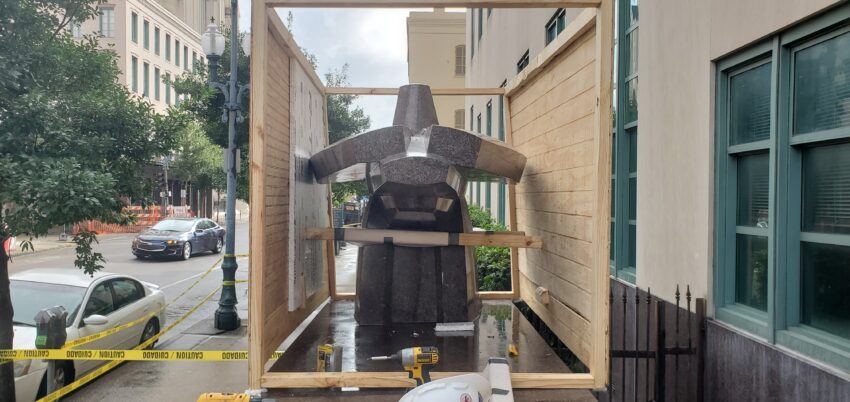
Sturdy enclosures were built to protect the sculptures, but the enclosures could be readily removed when no longer needed. Makeshift plywood enclosures were erected around the sculptures.
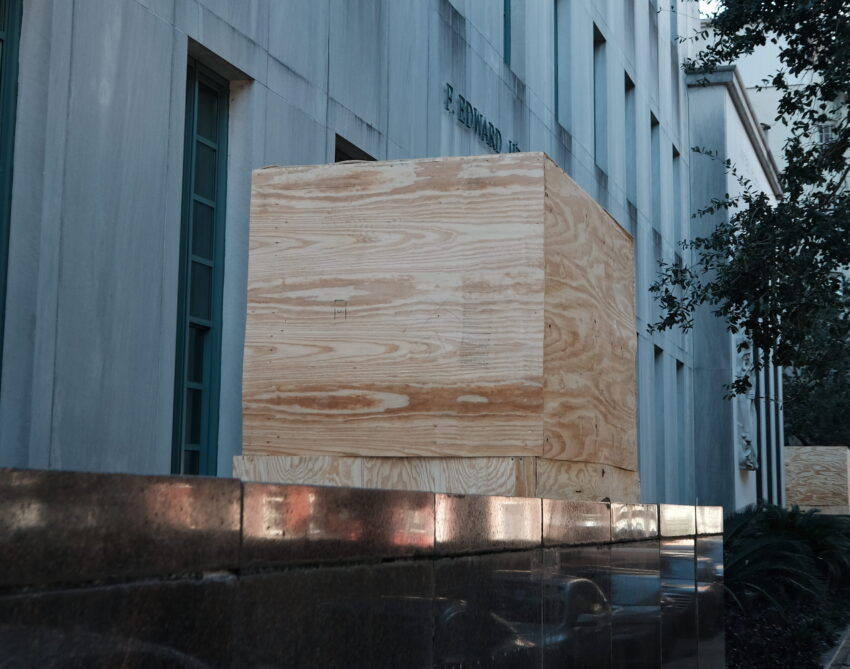
When the project was complete, Conservator Pikus returned to remove the boxes and perform a more complete conservation treatment of the limestone reliefs and granite eagles.
Flood Control and Harvesting Sugar Cane were cleared of dark biological growth by application of a biocide solution which was allowed to dwell. The solution was then cleared with pressurized water. The eagles, which also suffered from biological growth and environmental soiling on their surfaces, were cleaned in a similar manner.
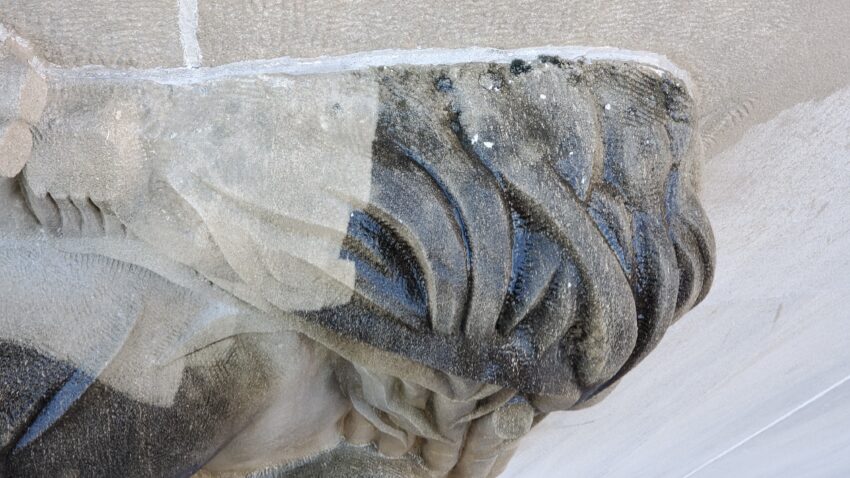
Nearly all of the surface soiling and biological growth was successfully reduced, revitalizing the appearance of the limestone and granite as it was intended by the original sculptors. Conservator Pikus completed the sculpture restoration in New Orleans by replacing failed sealant where it was needed as well as performing compensation of minor losses found on the eagle sculptures.
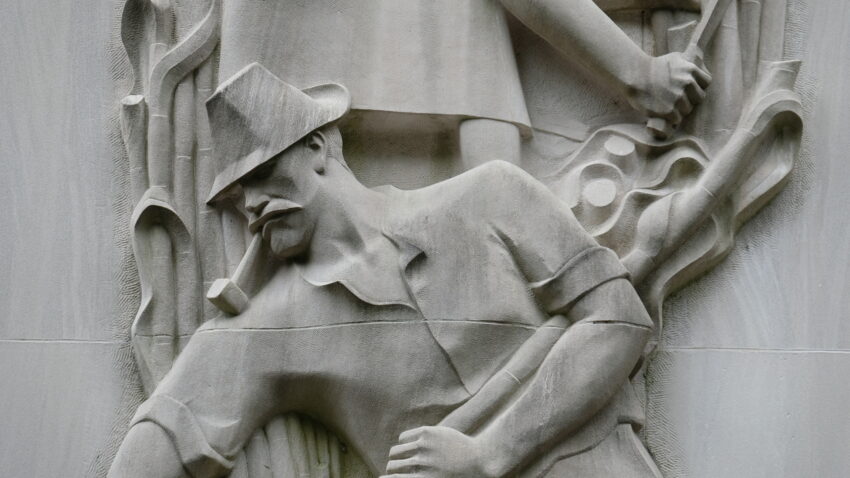
While some of the sculptures are in shade promoting the growth of microorganisms on porous surfaces, the warm, humid weather of New Orleans also plays a part. Biological material will surely regrow on the sculptures, but regular conservation maintenance can help prevent it.
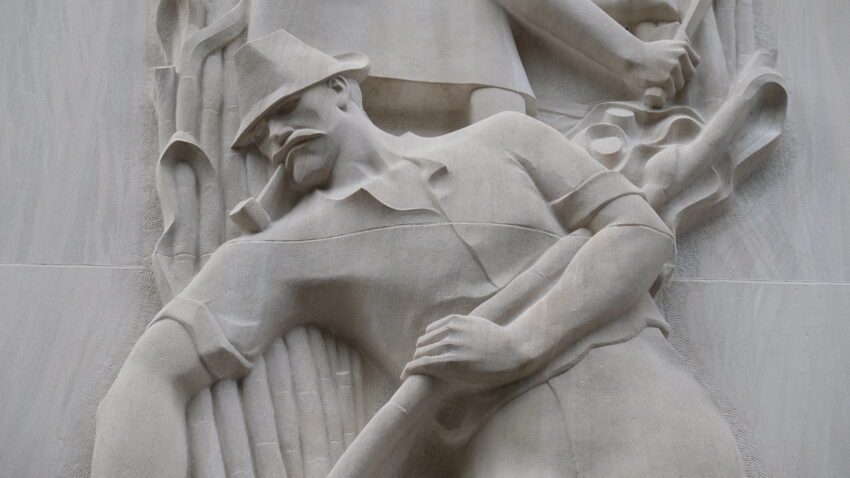
For now, enjoying these big and newly revitalized sculptures adorning F. Edward Herbert Federal Building is as easy as a walk down Maestri Street off of Lafayette Square.
